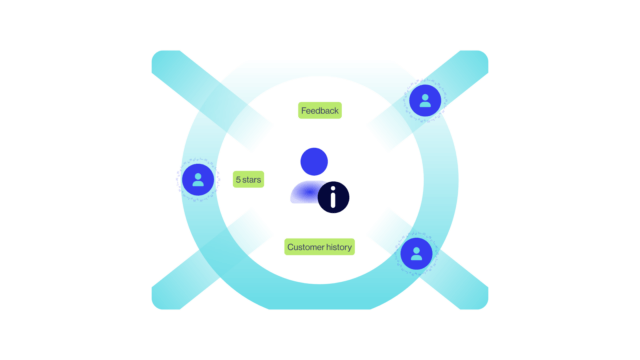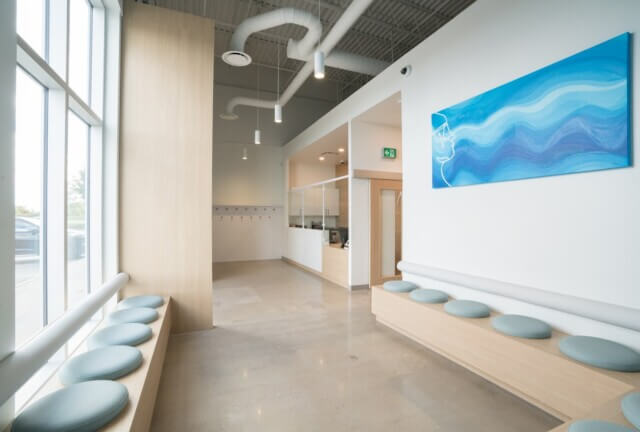
How to maximize your queue management software
To maximize the benefits of a QMS, these best practices have been highly effective.
Wole Olayinka • June 21, 2024 • Read time: 7 min

Most organizations adopt queue management software to address specific pain points, from crowded waiting rooms to a lack of specific service metrics. However, they then underutilize the tool by ignoring other valuable features, thereby failing to realize their full return on investment. For instance, clinics want to manage patient flow and reduce waiting times, but may not integrate the QMS with their electronic health record (EHR) systems leading to duplicate data entry for staff, which can slow down service and increase the potential for errors – a missed opportunity to further streamline operations and improve patient care with their QMS. Similarly, a financial aid department at a college may focus on managing queues but ignore the deep customer insights that the system affords; from tracking service peak times to recognizing the most common student issues.
To maximize the benefits of a QMS, adopting some of the following best practices can be highly effective.
Explore features to supercharge efficiency
Take full advantage of the software’s capabilities by thoroughly understanding its features. Participating in vendor training sessions and keeping up with software updates are essential steps. If you use WaitWell, ask your dedicated account manager; the ‘Account’ tab also has a ‘What’s New’ section where you can find all the latest updates. From cutting-edge queue control mechanisms to advanced workflow, analytics, and reporting, the platform offers organizations of all sizes a suite of options to improve service operations.
Here are some commonly underutilized features and examples highlighting how these features can improve service:
Two-way calendar integration (Outlook/Google): Allows seamless syncing of appointments between customer calendars on the appointment management system and business schedules on Outlook or Google, reducing scheduling conflicts.
- Example: A financial aid advisor at a university uses integrated calendars to manage administrative meetings and student consultation sessions seamlessly and her internal planning meetings are blocked off automatically so students don’t double book her, or her student consultations appear on Outlook while she’s trying to book a meeting with her supervisor.
Automated intake and waivers in service workflow: Streamlines service by automating documentation and waiver processes, reducing wait times and paperwork.
- A Department of Motor Vehicles (DMV) office implements automated intake forms and waivers. Before visiting, customers can submit required documentation online, so that upon arrival the staff already has all the paperwork required, fully prepared to serve the customer, thus cutting service time.
Virtual service management from a single interface: Enables easy scheduling and management of both in-person and virtual service, reducing conflicts and improving flexibility for staff and customers.
- A dietician schedules both virtual and in-person consultations on one interface. This allows them to manage appointments without juggling multiple software tools–they can queue up both in-person and virtual consultations and switch seamlessly between both service channels
Comprehensive analytics and reporting: Tracks service metrics, allows goal setting, and provides in-depth insights to optimize operations and improve service quality, contributing to informed decision-making and enhanced efficiency.
- An electronics service chain tracks service metrics such as peak customer traffic times, average service times, and wait times per location. By setting goals and leveraging insights from reports, management can see whether they are overstaffed or understaffed to optimize staffing levels, for example.
Integration of customer insights: Tracks service history, notes, ratings, and reviews to personalize service, anticipate needs, and collect feedback for continuous improvement, enhancing customer satisfaction and loyalty.
- An auto repair shop uses customer service history and feedback to review previous service visits and notes to better understand customer needs and ensure a more tailored service experience.

Voice notifications and waitlist displays: Improves accessibility by notifying customers of their turn via voice and displaying waitlist statuses, ensuring smoother operations and better service for all customers, including those with disabilities or language barriers.
- A veteran clinic uses voice notifications and digital displays to inform patients about their appointment status and waitlist position. All patients, including those with disabilities or language barriers, are kept informed.
Customize as much as needed
Tailor settings, configurations, and even the interface to align with specific organizational processes, customer flow, and brand identity.
Could your workflow be even better?
Regularly review and adjust your workflows, leveraging feedback and analytics from your QMS to identify bottlenecks, and decide where there is a need to streamline operations and reduce delays.
Proficient staff equals better service
Empower staff with comprehensive training on the usage of your QMS, best practices relevant to your workflow, and queue management strategies, for example, your ticket prioritization settings.
Harness feedback
Solicit feedback from staff and customers via surveys, feedback forms, or direct conversations, analyzing insights to refine your workflow and enhance user experience.
Be proactive about growth
Assess business needs regularly to ensure you are scaling your use of the QMS effectively, upgrading or adding features as necessary to accommodate increased customer flow and maintain service quality.
WaitWell is an all-in-one queue management and appointment platform providing a comprehensive suite of features designed to streamline and enhance service delivery. With tailored settings and configurations, WaitWell allows you to align the system with specific customer flow patterns and all your unique service requirements.


